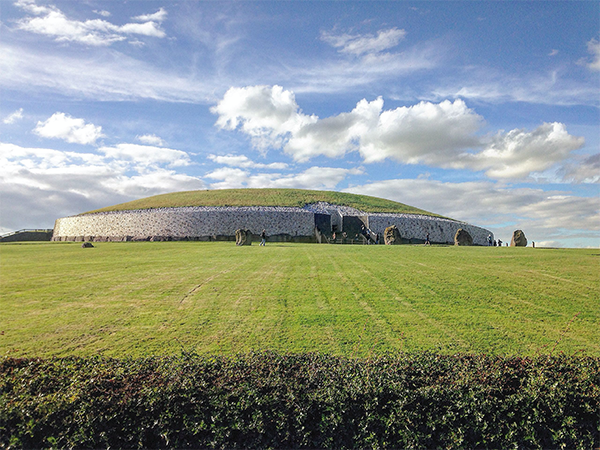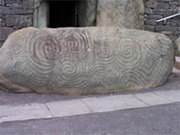Newgrange: Ancient Irish Stone Monument, Tomb
Newgrange is a very large, very old stone monument on a mound in the Brú na Bóinne region of County Meath, in Ireland. The stonework dates to 3200 B.C. The region has three dozen other tombs, including the very large Dowth and Knowth tombs, but Newgrange is the most well-known. 
Newgrange stretches 279 feet across and 39 feet high. Walking through the 62-foot entrance passage takes one a main chamber that has recesses that match the cardinal directions of north, south, and west. The main chamber was intended as a tomb, and archaeologists have found human remains inside. As at Stonehenge, the positioning of the stones had a specific astronomical purpose: On the winter solstice, the Sun shines through a box in the roof of the main chamber. The sunlight highlights the west recess, where the human remains were found. 
Outside the passage tomb are 97 large kerbstones, each bearing Celtic designs. Also as at Stonehenge, the stone used to build Newgrange came from far away–from the Mourne Mountains (50 miles to the north), from the Slieve Croob Mountains (67 miles to the north), and from the Wicklow Mountains (70 miles to the south). How those people at that time got those stones from one place to another remains a mystery. After the arrival of the Celts, in the first handful of centuries B.C., the people of Ireland stopped using Newgrange. The tomb was forgotten and was overgrown when it was rediscovered in 1699. With the advent of modern archaeology came the first proper excavation, in 1962–1973. Newgrange is now a UNESCO World Heritage Site and gets more than 200,000 visitors a year. Attendance at the winter solstice is especially desirable, at organizers have a lottery to determine who gets to be in the main chamber to see the sunlight. |
|




